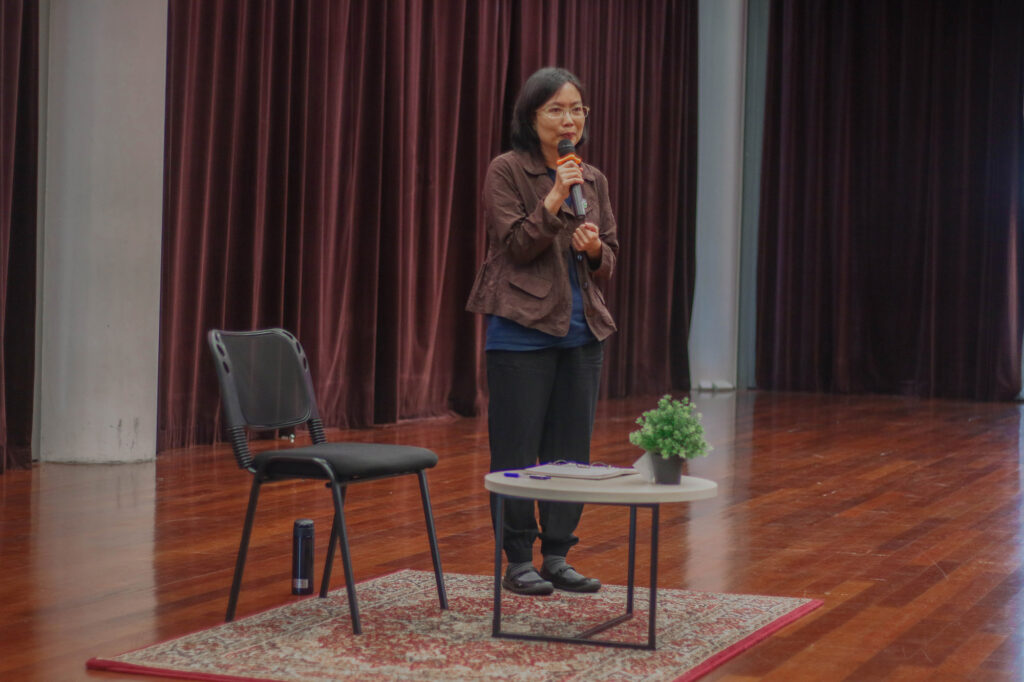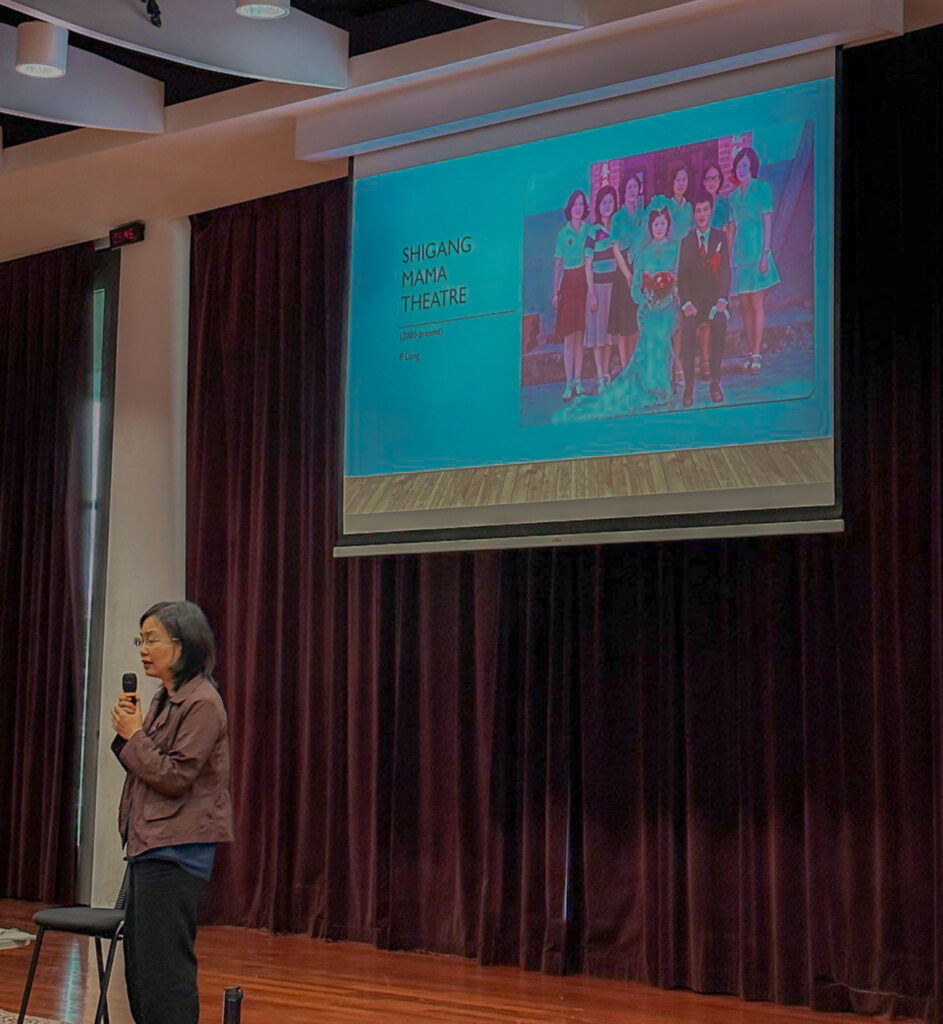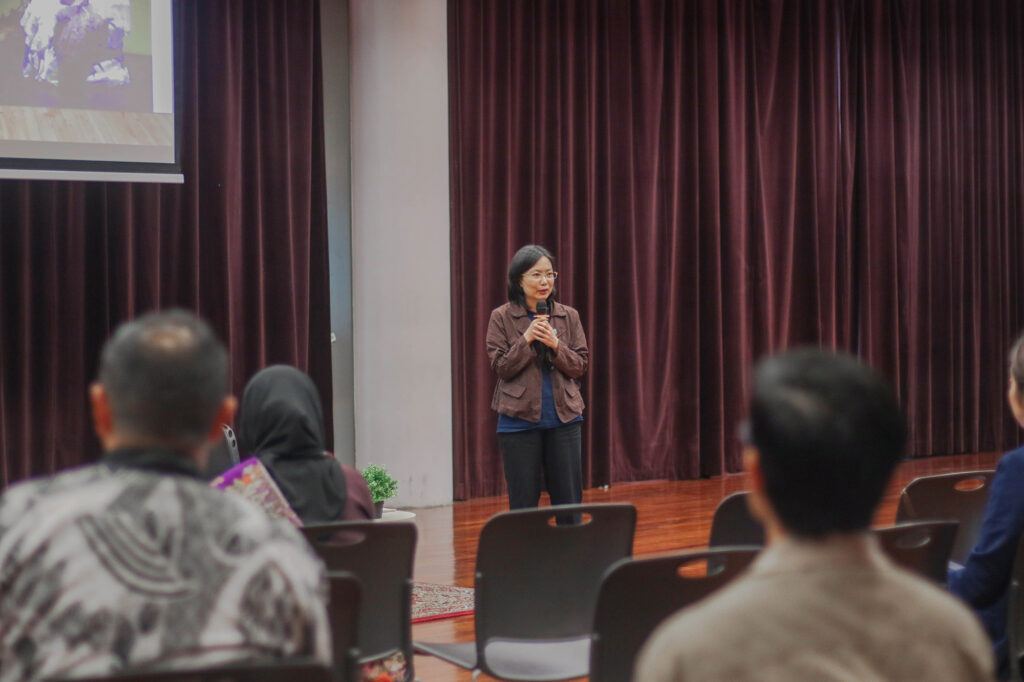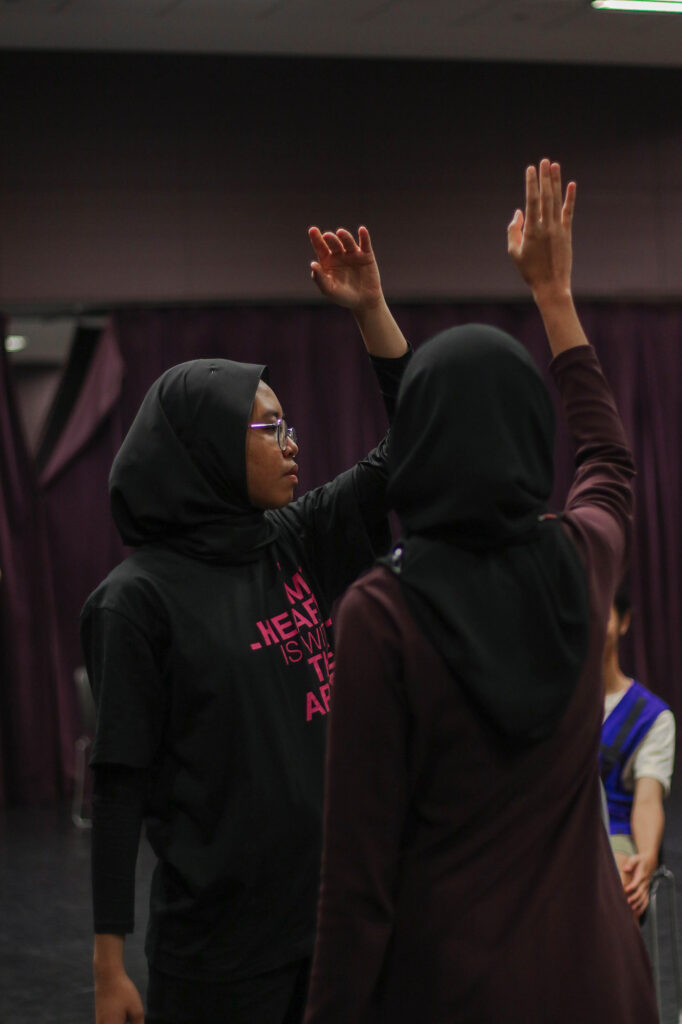Therapeutic Arts – Healing Minds, Mending Bodies
By Insyira Binti Rosly (2023)
How do we implement movement practices that are more therapeutic and supportive for the bodies, so that it will also be beneficial for performers?

Assoc. Prof. Liang Peilin, an Associate Professor in the NUS Department of English Language and Literature, gave a sharing on the “Probody Artmaking Lab” by first delving into her project based in Taiwan about the Shigang Mama Theatre. This theatre group was made up of non-professional female theatre actors who were mainly agricultural workers or farmers. Due to the actors being predominantly mothers and/or grandmothers, they were bestowed the title of “Mamas”. The group came together when theatre actors from Taipei visited Shigang for a recovery programme after their area was struck by an earthquake and narrated stories of their lives through their performances. During her research, Assoc. Prof. Liang observed that the bodies of the Mamas were ageing and as a result of spending the bulk of their time toiling hard, especially with back-bending degenerating work, in the fields. Despite this, they diligently attended rehearsals at the community centre after working, highlighting the value of theatre amidst their arduous and busy schedules.
Introducing Therapeutic Art
Assoc. Prof. Liang became interested in how therapy can be incorporated into their art forms, especially centred upon improving the state of their deteriorating bodies. With the help of a chiropractor and her students, she started introducing therapy-based exercises which the Mamas then adapted and included in their performances. The chiropractor assessed the body of the Mamas and recommended personalised and targeted exercises useful for them. Professor Liang’s students introduced these exercises to the Mamas, with 1 or 2 of them overlooking each Mama and aiding them to carry out these exercises.

These exercises were modified into their dance movements for their performances, each fitting the themes of marriage and childhood memories that the dance wished to express. For instance, during their performance “Pear Blossoms”, the measured act of taking out their clothes to mimic coming out of a cocoon originated from an upper back extension exercise. This performance was centred around the Mama’s struggle with intensive labour and their desire to combat and invalidate denigrating stereotypes imposed upon women and their roles in home-making and caregiving.
Another example of this adaptation would be the implementation of neck and shoulder stress-relieving exercises the Mamas perform when they attempt a chorus to express how the bride feels. By introducing these specially tailored exercises, these Mamas are able to get the relevant exercises required while engaging and training for their performances.
Performer-Centric Approach

Assoc. Prof. Liang tied her research to the notion of somatic ergonomics. Somatic ergonomics emphasises the rehabilitation of the mind and body particularly through training and performance. Therefore, the physical condition of the community should influence the intensity and complexity of their training and the aesthetic value it presents. She believed that this was necessary when looking at the bodies of the Mamas, to enable them to continue theatre sustainably for both recreation and as an outlet to express dissent and raise awareness of the burden laid on the women of Shigang. This safe space of theirs was an area transformed into a therapeutic platform that healed their body and mind in an appropriate and efficient manner.
Through adjusting their current rehearsals and performance techniques, the Mamas’ art was carefully curated to meet their bodily and mental needs. I believe such an approach is highly beneficial as it embeds body conditioning into their beloved art form, allowing them to substitute professional necessary treatment or intervention that they may not have access to in the first place, due to their positionalities in society that prevent them from doing so. It also allows them to continue to perform despite their ageing bodies and increase the sustainability of their art in the long term.
My Experience Attending a Movement Strategy Workshop

Following Assoc. Prof. Liang’s sharing, I was able to participate in a movement strategy workshop conducted by herself and Ms Hasyimah, a Malay dance practitioner and company manager of P7:1SMA Ltd. In this workshop, foundational Malay dance movements were crafted to become simple exercises. For example, the dance movement, Lenggang, was adjusted to place emphasis on the movement of the hips and how it sways. Assoc. Prof. Liang told the participants to imagine wearing a pair of tight jeans that were zipped up in order to remind us to maintain a straight posture and not put too much pressure on our lower backs. She shared that not conforming to this could cause discomfort and pain in the long run. Through these exercises, I could feel my body becoming more relaxed and less tense, unlike how it usually feels during my own Malay dance training sessions.
During the workshop, I could focus on my movements and posture to find more comfortable positions. Through this, I saw the possibilities of transforming art into a therapeutic space of rehabilitation for the body as I became more conscious of my posture and I know how to make my body feel relaxed. If more attention goes into carefully correcting each body part and its posture, I believe dance in this form could serve to improve the body conditions of art enthusiasts and practitioners as they practise their art forms.
